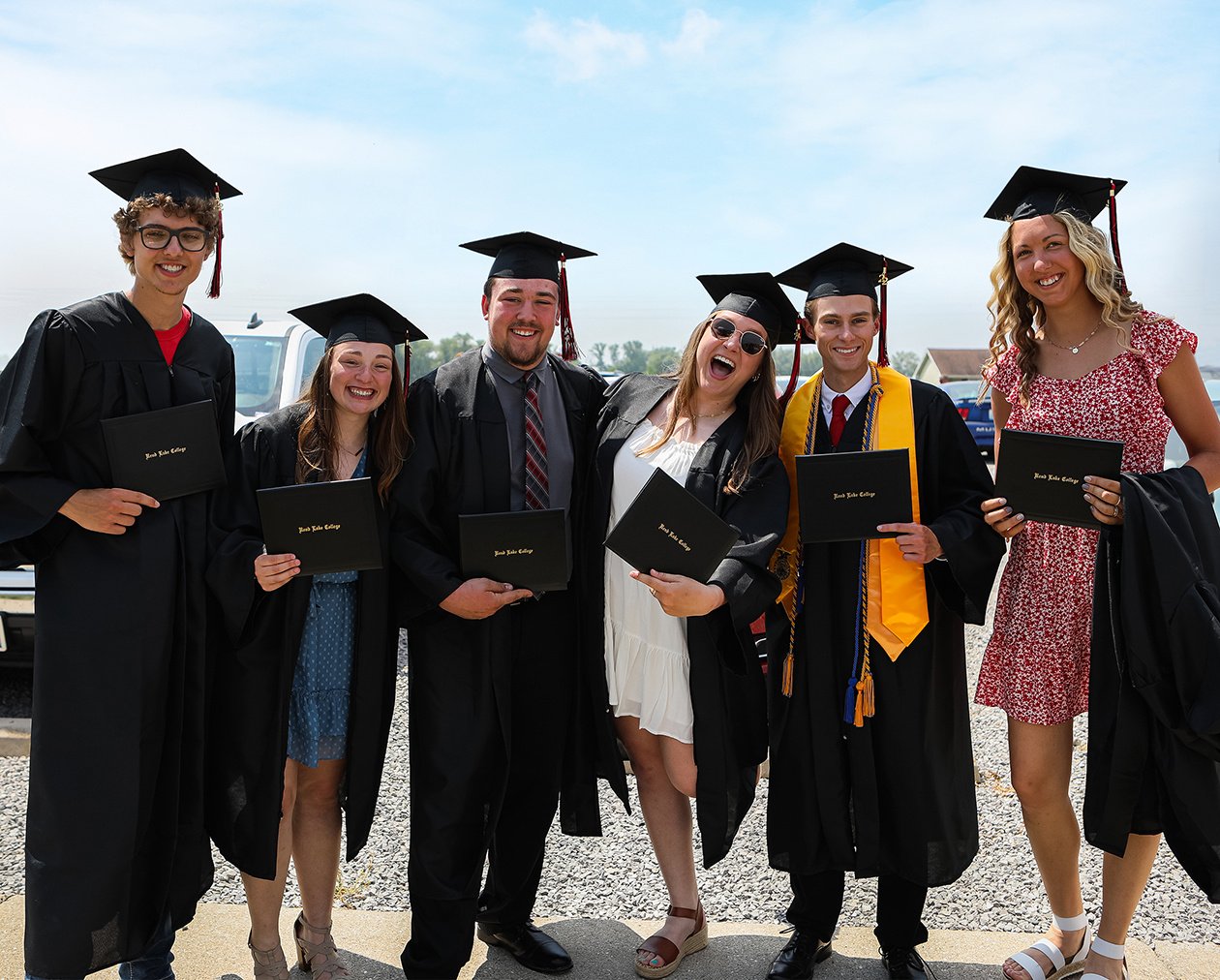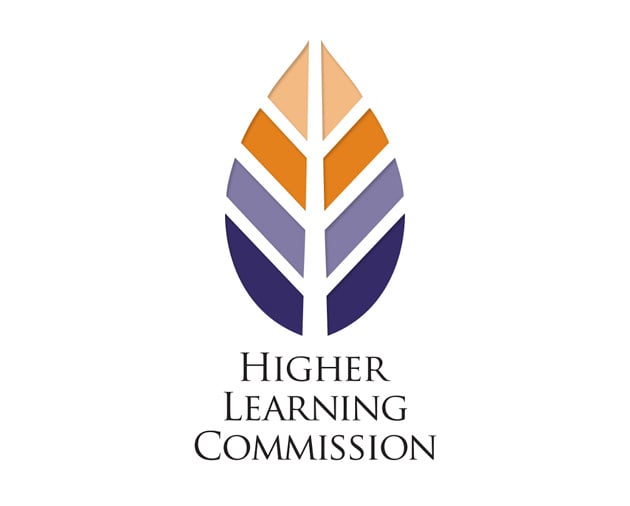Programs
Radiologic Technology
Welcome to our radiology program. Let us prepare you for a rewarding career in radiology. Explore our site to discover how we can help you achieve your goals in healthcare.
Application & Testing Opens: October 1, 2025 | Closes: May 1, 2026
Program Effectiveness Data
-
100 %Job Placement: Program 5-Year AverageThe number of graduates employed in the radiologic sciences compared to the number of graduates actively seeking employment in the radiologic sciences within twelve months of graduating. The five-year average benchmark established by the JRCERT is 75%.
-
87 %Credentialing Examination: Program 5-Year AverageThe number of students who pass, on the first attempt, the American Registry of Radiologic Technologists (ARRT) certification examination, or an unrestricted state licensing examination, compared with the number of graduates who take the examination within six months of graduation. The five-year average benchmark established by the JRCERT is 75%.
-
80 %Program Completion: Annual Completion Rate (2024)The number of students who complete the program within the stated program length. The annual benchmark established by the program is 65%.
Associate in Applied Science Degree
Radiologic Technology
This program is accredited by the Joint Review Committee on Education in Radiologic Technology. This program is designed to prepare students for careers in Radiologic Technology. The curriculum includes instruction in the operation of radiographic equipment, study of human anatomy and clinical experience. All curriculum courses must be completed with a grade of "C" or better. A criminal history background check is required. To continue in the Radiologic Technology program, all RAD courses must be taken in the order outlined in the curriculum.
The curriculum for this program has been developed to meet the licensing requirements for the State of Illinois. It is not determined whether the curriculum meets licensing requirements for any other states.
program details
Courses
| Total = 69.5 Hours | |
|---|---|
| Summer Term | |
| RAD 1200 - Radiologic Technology Orientation | 0.5 Cr. Hrs. |
| Fall Semester | |
| ENGL 1101 - Rhetoric and Composition I | 3 Cr. Hrs. |
| HECO 1202 - Health Care Terminology | 3 Cr. Hrs. |
| RAD 1201 - Intro to Radiology | 2 Cr. Hrs. |
| RAD 1202 - Radiology Procedures | 3 Cr. Hrs. |
| RAD 1203 - Patient Care | 2 Cr. Hrs. |
| ZOO 1105 - Anatomy & Physiology I | 4 Cr. Hrs. |
| Total | 17 Cr. Hrs. |
| Spring Semester | |
| MATH 1107 - Contemporary College Math | 3 Cr. Hrs. |
| RAD 1205 - Radiographic Equipment & Imaging I | 2 Cr. Hrs. |
| RAD 1206 - Intermediate Radiographic Procedures | 3 Cr. Hrs. |
| RAD 1207 - Radiology Clinical I | 5 Cr. Hrs. |
| ZOO 1106 - Anatomy & Physiology II | 4 Cr. Hrs. |
| Total | 17 Cr. Hrs. |
| Summer Term | |
| RAD 1208 - Radiology Clinical II | 6 Cr. Hrs. |
| Fall Semester | |
| COMM 1101 - Principles of Effective Speaking | 3 Cr. Hrs. |
| RAD 1209 - Radiographic Equipment & Imaging II | 2 Cr. Hrs. |
| RAD 1210 - Radiology Pathology | 2 Cr. Hrs. |
| RAD 1211 - Radiology Clinical III | 7 Cr. Hrs. |
| RAD 1215 - Cross-Sectional Anatomy | 1.5 Cr. Hrs. |
| Total | 15.5 Cr. Hrs. |
| Spring Semester | |
| RAD 1212 - Radiographic Equipment & Imaging III | 2.5 Cr. Hrs. |
| RAD 1213 Radiation Biology | 2 Cr. Hrs. |
| RAD 1214 Radiology Clinical IV | 7 Cr. Hrs. |
| RAD 1216 Radiology Review | 2 Cr. Hrs. |
| Total | 13.5 Cr. Hrs. |
Costs & How To Pay
Payments on student accounts must be made by the deadline included on the student statement.
- Fall: July 15
- Spring: December 15
- Summer: May 15
Students who do not make payments by this deadline may be dropped from their classes.
Accreditation
The Associate Degree Radiography Program is accredited by the:
Joint Review Committee on Education in Radiologic Technology
20 North Wacker Drive, Suite 2850
Chicago, Illinois 60606-3182
(312) 704-5300
mail@jrcert.org
The program's current accreditation award is 8 years. General program accreditation information and the current accreditation award letter can be found here.
The program was last site visited by the JRCERT in June 2024. That site visit resulted in a full, eight-year accreditation, which is the maximum length that is awarded. The next accreditation site visit is tentatively scheduled for the second quarter of 2032.
![]()
About the Profession
The registered radiologic technologist plays an important role on the medical team by providing quality radiographs for a physician or radiologist (a physician who has specialized in interpretation of diagnostic radiographic images). As a professional assistant, the radiologic technologist functions to aid in the diagnosis of various abnormalities including fractures, tumors, and malfunctioning body systems.
Responsibilities of the radiologic technologist include adjusting radiographic equipment for specific examinations, placing the patient into the correct position, making the required exposure, and processing the images. In some cases mobile radiographic equipment must be used in the emergency room, in surgery, or at the patient’s bedside. Responsibilities may also include performing quality assurance procedures, record keeping, ordering supplies, and maintaining equipment.
The major responsibility of the radiologic technologist, however, is compassionate care of the patient. In a profession driven by technical advances, caring for the needs of the patient remains the primary objective. Compassionate care includes proficiency in communication, respecting individual rights, and maintaining safety.
The radiologic technologist receives the social prestige that accompanies a professional career. As part of the medical team, professional colleagues might include nurses, lab technicians, physicians, therapists, and other scientific people dedicated to the medical profession. The knowledge and skills of a radiologic technologist serve an integral part of the medical community in the treatment and well being of the patient.
Program Mission
Program Goals
- Goal: Students will be clinically competent.
Student Learning Outcomes:
Students will apply positioning skills
Student will select appropriate technical factors
Students will practice radiation protection - Goal: Students will communicate effectively.
Student Learning Outcomes:
Students will use effective oral communication skills
Students will use effective written communication skills - Goal: Students will use critical thinking and problem solving skills.
Student Learning Outcomes:
Students will manipulate technical factors for non-routine examinations
Students will adapt positioning for non-routine examinations - Goal: Students will evaluate the importance of professional growth and development.
Student Learning Outcomes:
Students will determine the importance of continued professional development
Students will summarize their professional obligations upon gaining their ARRT
Employment Opportunities
Short-Term
Certificates
Essential skills and training to jumpstart your career in a matter of months
CT
The Computed Tomography Certificate program is designed to help equip a radiologic technologist with the knowledge, skills, and competence necessary to perform CT examinations in the workplace. This program includes topics on CT physics, CT applications, CT clinical training and cross-sectional anatomy. The program also is designed to assist the student in preparing for the ARRT's CT registry exam. All curriculum courses must be completed with a grade of "C" or better.
Plan Your Computed Tomography Certificate
| Total = 16 Hours | |
|---|---|
| Prerequisites | |
| Successful completion of AAS in Radiologic Technology or must be ARRT registered. | |
| Courses | |
| RAD 1220 - Computed Tomography Applications | 4 Cr. Hrs. |
| RAD 1221 - Computed Tomography Clinical | 6 Cr. Hrs. |
| RAD 1222 - Computed Tomography Physics | 4 Cr. Hrs. |
| RAD 1223 - Computed Tomography Cross-Sectional Anatomy | 2 Cr. Hrs. |
MRI
The Magnetic Resonance Imaging (MRI) Certificate prepares radiographers to work in medical facilities as MRI technologists. Graduates of the program are equipped with the appropriate knowledge to take the national MRI certification examination given by the American Registry of Radiologic Technologists. All curriculum courses must be completed with a grade of "C" or better.
| Total = 16 Hours | |
|---|---|
| Prerequisites | |
| Successful completion of AAS in Radiologic Technology or must be ARRT registered. | |
| Courses | |
| RAD 1232 - MRI Principles | 4 Cr. Hrs. |
| RAD 1233 - MRI Applications | 4 Cr. Hrs. |
| RAD 1234 - MRI Cross-Section | 2 Cr. Hrs. |
| RAD 1235 - MRI Clinical | 6 Cr. Hrs. |
CT
The Computed Tomography Certificate program is designed to help equip a radiologic technologist with the knowledge, skills, and competence necessary to perform CT examinations in the workplace. This program includes topics on CT physics, CT applications, CT clinical training and cross-sectional anatomy. The program also is designed to assist the student in preparing for the ARRT's CT registry exam. All curriculum courses must be completed with a grade of "C" or better.
Plan Your Computed Tomography Certificate
| Total = 16 Hours | |
|---|---|
| Prerequisites | |
| Successful completion of AAS in Radiologic Technology or must be ARRT registered. | |
| Courses | |
| RAD 1220 - Computed Tomography Applications | 4 Cr. Hrs. |
| RAD 1221 - Computed Tomography Clinical | 6 Cr. Hrs. |
| RAD 1222 - Computed Tomography Physics | 4 Cr. Hrs. |
| RAD 1223 - Computed Tomography Cross-Sectional Anatomy | 2 Cr. Hrs. |
MRI
The Magnetic Resonance Imaging (MRI) Certificate prepares radiographers to work in medical facilities as MRI technologists. Graduates of the program are equipped with the appropriate knowledge to take the national MRI certification examination given by the American Registry of Radiologic Technologists. All curriculum courses must be completed with a grade of "C" or better.
| Total = 16 Hours | |
|---|---|
| Prerequisites | |
| Successful completion of AAS in Radiologic Technology or must be ARRT registered. | |
| Courses | |
| RAD 1232 - MRI Principles | 4 Cr. Hrs. |
| RAD 1233 - MRI Applications | 4 Cr. Hrs. |
| RAD 1234 - MRI Cross-Section | 2 Cr. Hrs. |
| RAD 1235 - MRI Clinical | 6 Cr. Hrs. |
radiology
how to apply
Our radiology program has it's own application that's in addition to the college's primary application. The steps to apply are explained below.

1. Apply to the College
If you have never been a student at RLC, the first step is to apply to the college.
2. Schedule Testing
Once you are enrolled at RLC, the next step is to test. Click the button to learn all about Allied Health Testing and how to get started.

3. Apply to the Radiology Program
The final step is to submit the application to our radiology program.
The radiology program testing and application open October 1st, 2025.
Radiology application deadline is May 1st, 2026 at midnight.
1. Apply to the College
If you have never been a student at RLC, the first step is to apply to the college.
2. Schedule Testing
Once you are enrolled at RLC, the next step is to test. Click the button to learn all about Allied Health Testing and how to get started.

3. Apply to the Radiology Program
The final step is to submit the application to our radiology program.
The radiology program testing and application open October 1st, 2025.
Radiology application deadline is May 1st, 2026 at midnight.

Program Outcomes
1. Apply positioning skills.
2. Communicate effectively with health care staff and patients.
3. Manipulate technical factors for non-routine examinations
4. Determine the importance of continued professional development
Program Outcomes
1. Demonstrate clinical competence in the CT department.
2. Demonstrate acceptable professional and ethical standards
3. Demonstrate proper patient care
4. Demonstrate appropriate radiation safety when utilizing correct CT protocols
5. Understand and apply basic physical principles
6. Evaluate image quality, image artifacts, and quality assurance
7. Differentiate various tissues from bone anatomy
Program Outcomes
1. Demonstrate clinical competence in the MRI department.
2. Demonstrate a clear understanding of MRI patient safety.
3. Differentiate various tissues from bone anatomy
4. Recall MRI imaging techniques and pulse sequences
5. Explain the use of FDA approved MRI imaging contrast
Day & Evening Program Options
Day
The 21- month (69.5 credit hours) continuous Radiologic Technology degree program provides didactic and clinical education for potential Radiographers. Clinical experience occurs at clinical facilities in the local area. Program participants can expect substantial off-campus students and preparation for classroom lectures and lab exercises. Students will attend class and clinical during day hours with the exception of assigned evening and weekend rotations which vary upon semester. Upon completion of this program, graduates will obtain an Associate in Applied Science Degree and will be eligible to sit for the national ARRT examination.
Please Note:
- Under no circumstances will a student be allowed to change from the day track to evening track or vice-versa.
- Students should be aware that clinical start times vary among clinical sites.
- Students who have been convicted of a felony charge may not be eligible to apply for the American Registry of Radiologic Technologists (ARRT) Certification examination. If there is a concern, the student may have the ARRT Ethics Committee evaluate a pre-application.
- Students officially accepted into the program will be required to acquire Hepatitis B immunizations, a TB test, CPR certification and health physical at their own expense.
Evening
The 21- month (69.5 credit hours) continuous Radiologic Technology degree program provides didactic and clinical education for potential Radiographers. Clinical experience occurs at clinical facilities in the local area. Program participants can expect substantial off-campus students and preparation for classroom lectures and lab exercises. Students will attend class and clinical during weekday evening hours with the exception of assigned day rotations and weekend rotation which vary upon semester. Upon completion of this program, graduates will obtain an Associate in Applied Science Degree and will be eligible to sit for the national ARRT examination.
Please Note:
- Under no circumstances will a student be allowed to change from the day track to evening track or vice-versa.
- Students should be aware that clinical start times vary among clinical sites.
- Students who have been convicted of a felony charge may not be eligible to apply for the American Registry of Radiologic Technologists (ARRT) Certification examination. If there is a concern, the student may have the ARRT Ethics Committee evaluate a pre-application.
- Students officially accepted into the program will be required to acquire Hepatitis B immunizations, a TB test, CPR certification and health physical at their own expense.
Day
The 21- month (69.5 credit hours) continuous Radiologic Technology degree program provides didactic and clinical education for potential Radiographers. Clinical experience occurs at clinical facilities in the local area. Program participants can expect substantial off-campus students and preparation for classroom lectures and lab exercises. Students will attend class and clinical during day hours with the exception of assigned evening and weekend rotations which vary upon semester. Upon completion of this program, graduates will obtain an Associate in Applied Science Degree and will be eligible to sit for the national ARRT examination.
Please Note:
- Under no circumstances will a student be allowed to change from the day track to evening track or vice-versa.
- Students should be aware that clinical start times vary among clinical sites.
- Students who have been convicted of a felony charge may not be eligible to apply for the American Registry of Radiologic Technologists (ARRT) Certification examination. If there is a concern, the student may have the ARRT Ethics Committee evaluate a pre-application.
- Students officially accepted into the program will be required to acquire Hepatitis B immunizations, a TB test, CPR certification and health physical at their own expense.
Evening
The 21- month (69.5 credit hours) continuous Radiologic Technology degree program provides didactic and clinical education for potential Radiographers. Clinical experience occurs at clinical facilities in the local area. Program participants can expect substantial off-campus students and preparation for classroom lectures and lab exercises. Students will attend class and clinical during weekday evening hours with the exception of assigned day rotations and weekend rotation which vary upon semester. Upon completion of this program, graduates will obtain an Associate in Applied Science Degree and will be eligible to sit for the national ARRT examination.
Please Note:
- Under no circumstances will a student be allowed to change from the day track to evening track or vice-versa.
- Students should be aware that clinical start times vary among clinical sites.
- Students who have been convicted of a felony charge may not be eligible to apply for the American Registry of Radiologic Technologists (ARRT) Certification examination. If there is a concern, the student may have the ARRT Ethics Committee evaluate a pre-application.
- Students officially accepted into the program will be required to acquire Hepatitis B immunizations, a TB test, CPR certification and health physical at their own expense.
What our warriors are saying
student journeys
The faculty and staff are always friendly and very helpful. This school is very community-based, which I love. Not once have I ever regretted my decision.

Rend Lake College has been a great resource for me as I continue my education. They’ve guided me through my first two years of college and helped me reach my full potential. Thank you for everything Rend Lake!

"I looked at several colleges but chose RLC because they stood out with a better program. I met some of my best friends at RLC. The teachers poured so much into me. The things they taught me will help me in life forever."

Radiology FAqs
Please read all application materials and the section of the catalog that pertains to your program of interest. Many of your questions may be answered there.
When is the application deadline for the Rad Tech program?
How many students are accepted into the program each year?
How do you choose candidates?
Are there any prerequisites for the program?
What is required to be turned in before the deadline of May 1st?
Does Radiologic Technology have an admission fee?
Do I have to be accepted by the College before I can be accepted into the Radiologic Technology program?
When does the Radiologic Technology program start?
How long is the Radiologic Technology program?
Should I apply before I ask for the transcript to be sent?
You may turn in the application form before you ask other schools to send transcripts. As long as your file is complete before the deadline, it is not important in what order things arrive. It is your responsibility to make sure we receive everything needed for your file before the deadline.
Should I speak to an advisor before I sign up for classes?
While the College rules do not require you to be advised before you sign up for classes, it is a good idea to come to our office and talk to someone rather than signing up for any classes that sound good.
Do students have to do clinical work?
Yes, there are four different clinical courses in the program. Students will be assigned to various areas in Radiology as well as a variety in shift times and clinical locations.
Can I go part-time?
General education coursework may be completed on a part-time basis. However, once the Radiologic Technology program begins, coursework is completed only on a full-time basis.
Do I need my own computer?
Many courses include computer and Internet-based assignments. Having your own computer gives you more freedom in completing course assignments. Computer labs are available on campus for student use. Having basic knowledge of how to operate a computer and several computer programs such as Word, PowerPoint etc are crucial.
Key Information for Applying
Become Familiar with RLC Admission Requiremements
Being well-informed about admission requirements increases your chances of a successful application and an overall smooth application process.
Apply for Admission
Applying to Rend Lake College is an investment in your future, offering numerous benefits that lead to professional and personal growth.
Speak with an Academic Advisor
Academic advisors are valuable resources for maximizing your college experience and ensuring you make the most of your education.
Apply for Financial Aid
Applying for financial aid opens up a range of financial resources and options that can make attending college more affordable and less stressful.
Start Here. Go Anywhere.
Transfer Information
Students who graduate with an Associate Degree can transfer their credits to a university and pursue a Bachelor's degree and beyond.
Articulation agreements - also known as Transfer Guides - document the pathway between RLC and the university. Historically, RLC has built articulation agreements with midwestern universities. However, students have worked with both institutions to build a pathway.
View our transfer guides and more about articulation agreements

Accreditation
Quality Education. Guaranteed.
Since 1969, Rend Lake College has been accredited by the Higher Learning Commission (HLC), one of six regional accreditors in the United States. Accreditation is vital to what we do. It serves as a measure of quality, allows us to access and distribute federal student aid, facilitates the transfer of classes between institutions and more. The Higher Learning Commission is recognized by the U.S. Department of Education and by the Council for Higher Education Accreditation.

Faculty & Staff
Allied Health Division
Phone: (618) 437-5321 Ext. 1251
Email: ah_info@rlc.edu
Address: 468 N. Ken Gray Parkway, Ina, IL 62846 Attn: Allied Health
Fax Number: (618) 437-5677 Attn: Allied Health
News
View NewsRLC holds pinning ceremony for 2025 Radiologic Technology Students
Rend Lake College held a pinning ceremony on May 15 to celebrate over 20 students who successfully completed the Radiologic Technology program.
RLC Radiology Program Has Been Reaccredited By JRCERT
RLC is proud to announce that the Radiology program has been reaccredited for the maximum eight years by the JRCERT.









